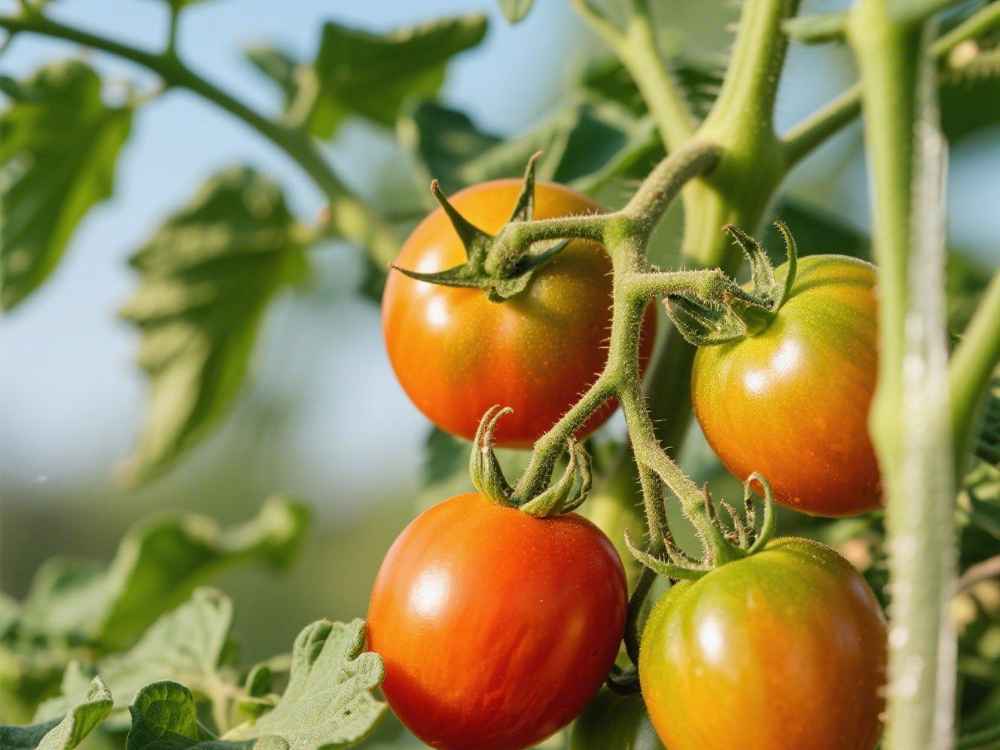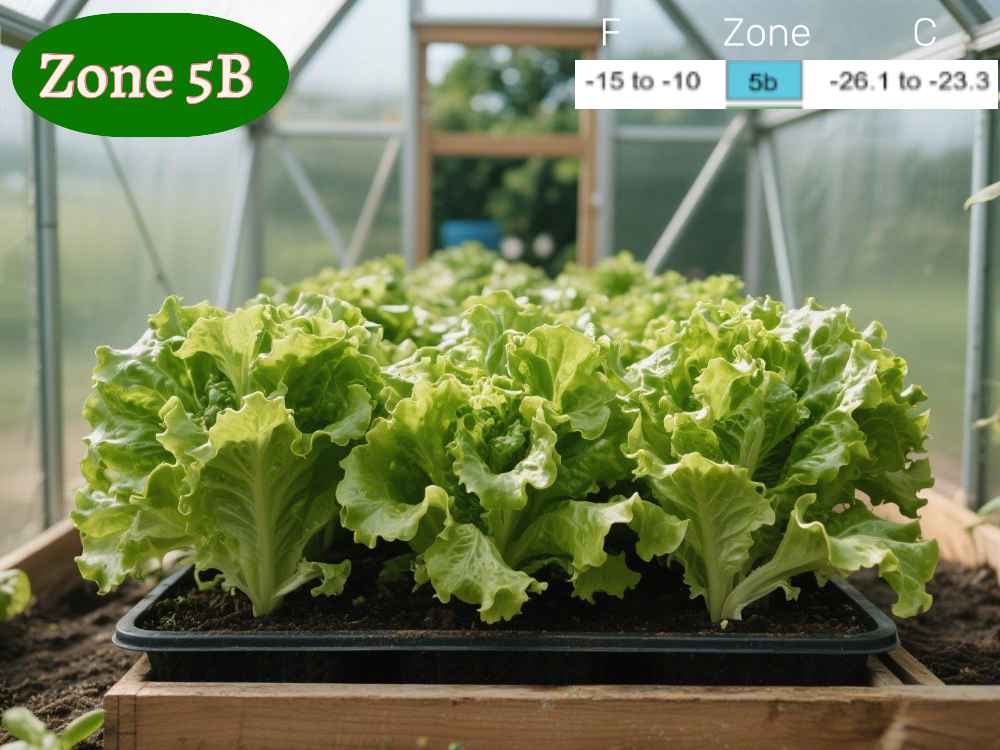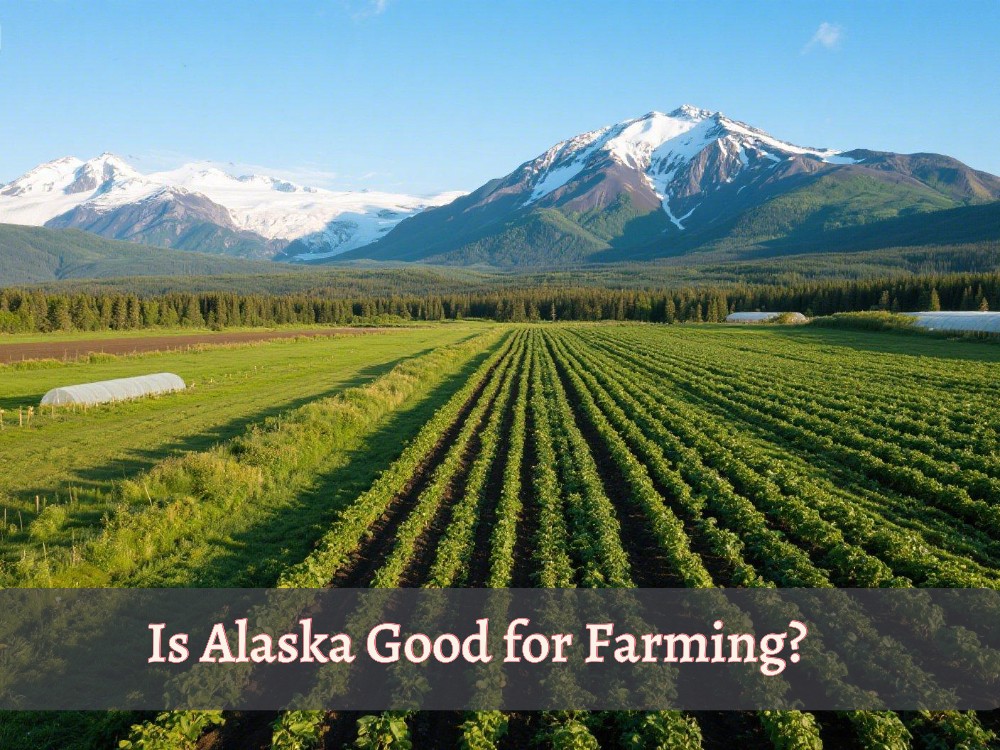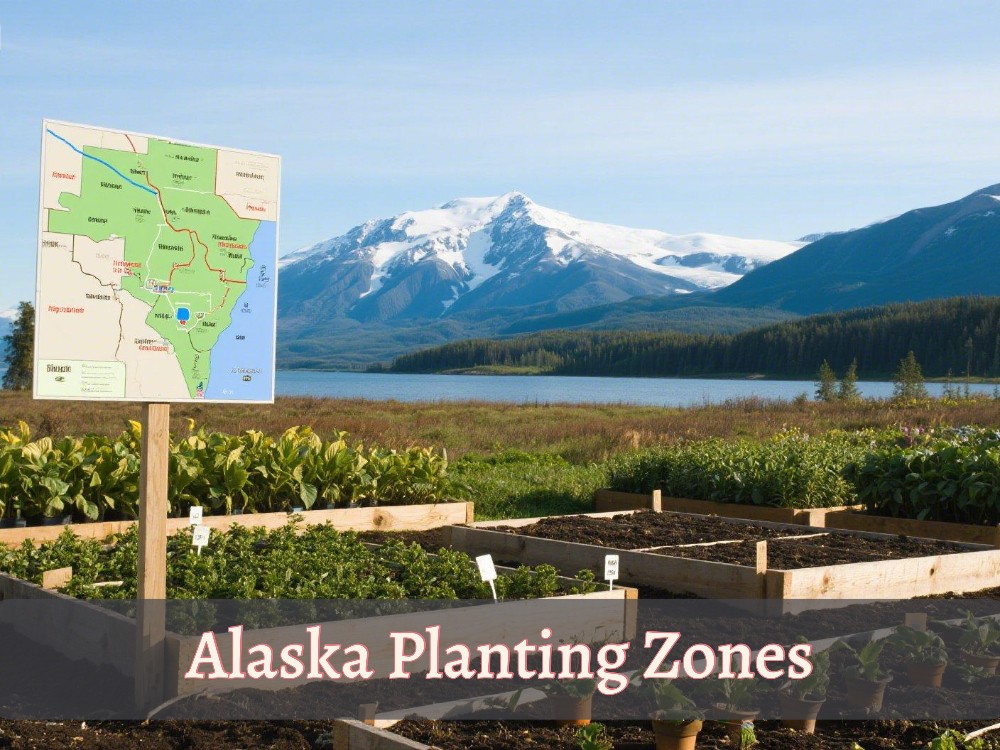In Alaska, the growing season is very short, about 50 to 110 days, and the frost period lasts a long time (8 to 10 months). However, this doesn’t mean that growing garlic in Alaska is impossible. With the right planning and approach, you can definitely plant your own healthy garlic.
Right planning to grow garlic in Alaska includes choosing the right variety, preparing soil, watering carefully, and managing some pests and diseases. So, let’s explore how to grow garlic in Alaska.
How to Grow Garlic in Alaska?
Alaska has almost 8 USDA planting zones, with different minimum temperature ranges, frost dates, and growing periods. On the other hand, garlic is hardy perennial, especially hard-neck garlic, which requires chilly periods for vernalization.
Soft-neck garlic varieties can not handle extreme cold, which usually occurs in northern and interior Alaska. However, if you live in south or southwest Alaska, where USDA zones 5 and 6 are, you can plant soft-neck garlic in the late spring (May) when frost risk has passed.
Best Garlic Varieties for Alaska
For Alaskan gardeners, hard-neck garlic is the best option according to Alaska’s climate conditions. This garlic variety can tolerate extremely low temperatures at -35C (-35F). So, before moving forward with how to grow garlic in Alaska, choose hard-neck garlic, such as Rocamblo, purple Stripe, and porcelain.
However, in USDA zones from 1 to 4a, you must protect hard-neck garlic from cold (below -35C) because these zones experience minimum temperatures from -55C to -31C (-60 to -25F).
Soft-neck garlic (Silver screen, California early, etc.) in these same zones (1 to 4) is not recommended because these garlic varieties have lower temperature tolerance (-15C/5F) than hard-neck.
Soft-neck garlic may be an ideal choice for gardeners who live in zones 6 to 8 in Alaska. Overall, the right planting time for garlic is the most important and may differ in each zone.
When to Plant Garlic in Alaska?
The right time to plant garlic in Alaska varies based on the area and its climate. Whether you live anywhere in Alaska, plant garlic cloves 2 to 3 weeks before frost and protect them with a mulch layer during winters. Here are ideal planting times for garlic in different parts and zones of Alaska.
- Central to Northern Alaska consists of colder zones from 1a to 4b, so start planting hard-neck garlic in early to late July or early August, especially in 3 and 4 zones.
- Plant hard-neck garlic from late September to early October in south and southeast Alaska, where zones 3a to 7a are. Growing soft-neck garlic is also possible there, particularly in zone 6 and 7.
| Alaska Zone | Recommended Garlic Type | Planting Time |
|---|---|---|
| Zone 1a – 2b | Hard-neck | Early to Late July or Early August |
| Zone 3a – 4b | Hard-neck | Early to Late July or Early August |
| Zone 3a – 4b | (Alternate Timing) | Early to Mid October |
| Zone 5a – 5b | Hard-neck or Soft-neck | Late October to Early November |
| Zone 6a – 7a | Soft-neck (also Hard-neck) | Mid-October to Early November |
| Zone 3a – 7a | Hard-neck | Late September to Early October |
Tip for Everyone: Use raised beds or containers and apply a thick mulch layer to protect cloves during frost days. You can also grow garlic seedlings indoors during frost days to transplant when the soil starts to warm up.
How to Care for Garlic in Alaska?
Before and after planting garlic cloves, you must know about care and maintenance.
Soil
Firstly, check the soil condition! In Alaska, the soil is usually acidic, cold, slightly rocky, and poor in organic matter. John Boy Farms recommends sandy loam soil for garlic. Pure loam soil is also good, but it is recommended to mix a little sand and organic matter, such as compost or coco coir.
Open ground, Raised Beds?
Living in southern and central Alaska, you can sow garlic seeds in the open ground, but protection may be needed in winter. Alaska’s soil freezes quickly, so raised beds are safe for garlic because they keep the soil warm.
Watering
Water immediately after planting garlic cloves to moist soil not soggy or wet. Watering later or not depends on Alaska’s temperature situations: if the weather is dry, water lightly every 7 to 10 days until the ground freezes. Check out 4 clear signs of water deficiency!
Stop water during snowfall. Then, start watering again when the soil warms up after the last frost date. Garlic gardening describes different water techniques in different soil types.
Mulching
In Alaska, during winter or intense cold below -15C, the mulch layer becomes a blanket for garlic. Apply a thick layer of about 4 inches of pine straw, grass clippings, or wood chips. After watering the garlic, wait for 5 minutes, then use mulch around them when the soil sets properly.
Keene Organics says that enough soil also works as mulch, but mulch is beneficial to minimize weeds. Even some gardeners remove mulch in the spring, but Keene Organics also suggests keeping it until harvest because it controls both moisture and weeds.
Fertilizing
While living in Alaska, you may have to feed your garlic early. Before planting, add compost and well-rotted manure to the soil.
As the snow melts in Alaska, the weather warms up, and garlic shoots appear add nitrogen-based fertilizers, such as emulsion or blood meal, to continue vegetative growth. Gardening know-how says to stop nitrogen fertilizing when the bulb is forming.
Pests and Disease
Since Alaska’s weather is cold, pests and diseases mostly do not occur, but some issues may appear when conditions are preferable. As Alaska’s soil remains wet and cold for a long time, fungal diseases like white rot can attack even if the soil stays wet continuously, and problems like neck rot and fusarium rot may build. So, try to plant garlic cloves at the right depth to prevent these diseases.
Similarly, although the intensity of thrips and onion maggots is lower in Alaska than in warmer areas, in a greenhouse or local warmer areas, and during the growing season, some insects may be active, especially when garlic is -planted in the same place year-round. Grow Organic and Rasa Creek Farm have described how to identify and manage them on garlic.
Final Thoughts: Growing Garlic in Alaska
Growing garlic in Alaska takes proper planning. Depending on the variety and other factors, garlic will be ready to harvest after 6 to 8 weeks. In addition, it also grows year-round because it is a perennial genetically.
You better know your local weather situation so everything is in your hand! Indeed, cold winds and snow slow garlic growth, but this same weather enhances the deep aroma and flavor of garlic.






